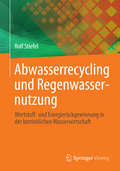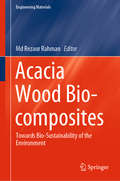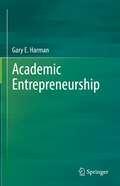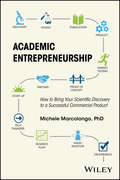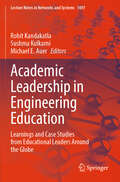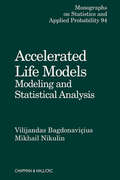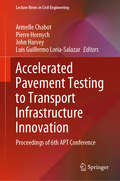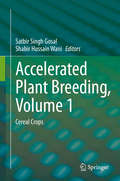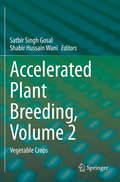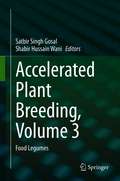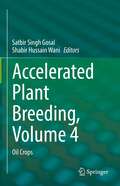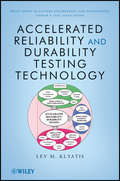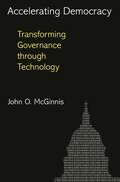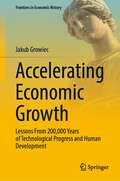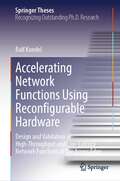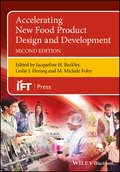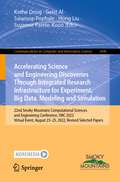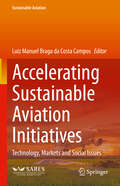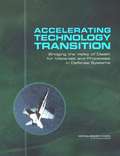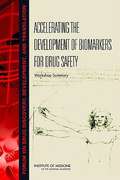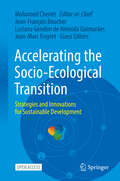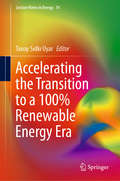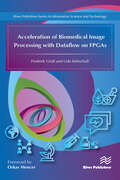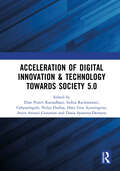- Table View
- List View
Abwasserrecycling und Regenwassernutzung: Wertstoff- und Energierückgewinnung in der betrieblichen Wasserwirtschaft
by Rolf StiefelDarstellung der sich versch#65533;rfenden Anforderung hinsichtlich Wassergewinnung, h#65533;here Anforderung bei der Abwassereinleitung sowie der Preisdruck bei Energie- und Rohstoffen. L#65533;sungsm#65533;glichkeiten f#65533;r Industriebetriebe durch wassersparende Produktion, Abwasserrecycling, Rohstoffr#65533;ckgewinnung, Regenwassernutzung und energieeinsparung.
Acacia Wood Bio-composites: Towards Bio-Sustainability of the Environment (Engineering Materials)
by Md Rezaur RahmanThis book investigates the enhancement of properties of acacia wood and its surface treatment for high strength bio-composites. It describes the tensile, flexural and impact strength, surface behaviour, morphological analysis, infrared spectral functional analysis, thermal properties analysis and dielectrical properties of acacia wood bio-composites. It reports efforts on the optimization of fabrication techniques to prepare acacia wood reinforced bio-composites based on PLA, PHA, Etc. The book also reports on environmental impact analysis of acacia wood bio-composites. A special chapter is dedicated to the nano-enhancement of acacia wood bio-composites and their possible use in applications in terms of sustainability and economics.
Academic Entrepreneurship
by Gary E. HarmanThis book explores different aspects of entrepreneurship from both an academic and a commercial point of view. The first chapter the university culture is considered. The nature of the technology or service is important. Some technologies are adaptive, in that they are developing products that are already in the marketplace, and these fit easily in academic institutions. Other technologies are disruptive and new products must be developed. These fit less easily into university structures since a commercial entity is required. Chapter 4 considers the important requirements of conflict of interest (COI). Either the university culture or COI can hinder or aid entrepreneurial faculty. The second chapter deals with the reasons why an individual faculty might wish to become entrepreneurial. In many cases, a faculty member wants to see their technology in practice and not just a publication in a scientific journal. If a technology is disruptive, then a commercial entity is probably essential. If so, then funding must be obtained. There are “valleys of death” (1) where scientific discoveries to useful products and (2) the development, production and marketing of a commercially viable product. Chapter 6 deals specifically with methods of funding start-up companies. Chapter 3 describes several innovative programs in biology. These include genetic approaches, plant management systems and the author’s own program that deals with microbial approaches to sustainable agriculture. Chapter 5 describes the crucial areas of agreements, contracts, regulatory affairs and patents. These legal documents are critical components of entrepreneurial efforts and must be understood and pursued correctly. Finally, this book could have been entitled “things I wish I had known when I first started commercial activities.” It is my hope that it can make the path of fledgling entrepreneurial smoother and more successful.
Academic Entrepreneurship: How to Bring Your Scientific Discovery to a Successful Commercial Product
by Michele MarcolongoThe pathway to bringing laboratory discoveries to market is poorly understood and generally new to many academics. This book serves as an easy-to-read roadmap for translating technology to a product launch – guiding university faculty and graduate students on launching a start-up company.• Addresses a growing trend of academic faculty commercializing their discoveries, especially those supported by the National Science Foundation and National Institutes of Health• Offers faculty a pathway and easy-to-follow steps towards determining whether their discovery / idea / technology is viable from a business perspective, as well as how to execute the necessary steps to create and launch a start-up company• Has a light-hearted and accessible style of a step-by-step guide to help graduate students, post-docs, and faculty learn how to go about spinning out their research from the lab• Includes interviews by faculty in the disciplines of materials science, pharmaceuticals, medical devices, information technology, energy, and mechanical devices – offering tips and discussing potential pitfalls to be avoided
Academic Leadership in Engineering Education: Learnings and Case Studies from Educational Leaders Around the Globe (Lecture Notes in Networks and Systems #1097)
by Michael E. Auer Rohit Kandakatla Sushma KulkarniEngineering institutions worldwide are undergoing significant transformation as they work to adapt themselves to the learning needs of students in the 21st century, changing trends in the requirements of the industry and society, and growing concerns about issues related to sustainable development and climate change. Future engineering graduates must be equipped to tackle complex problems in society that are aligned with the United Nation’s Sustainable Development Goals (SDGs). There are increasing calls for engineering institutions to create quality learning experiences for students, enabling them to develop deeper learning skills such as critical thinking, problem-solving, life-long learning, leadership skills, and the ability to work in teams. Engineering curricula must be made multidisciplinary, innovative, and outcome-driven by integrating evidence-based pedagogies and learning mechanisms. For this to happen, academic leaders must reimagine their institutions with significant changes at the administration, governance, and leadership levels. Establishing new-age institutions that meet international accreditation standards requires dynamic academic leaders at multiple levels who can work collaboratively to achieve the vision and mission of the institution. This book is an attempt to share key learnings from academic leaders from around the world on important trends emerging in engineering education. Aspiring academic leaders will get a glimpse of the thought process and vision of such leaders, how they strategize and support their institutions for the betterment of the students, and what kind of changes they are working on to keep up with the ever-evolving environment. The book is divided into four sections. Each section comprises multiple chapters written by different academic leaders that are based on their experiences of implementing best practices at their respective institutions. Section 1 - Governance and Leadership of Engineering Institutions Section 2 - Creating Quality Learning Experiences Section 3 - Preparing Institutions to become Knowledge Hubs for Research, Innovation, and Entrepreneurship Section 4 - Empowerment of Faculty and Students for the 21st Century The sections and chapters will be of great value to multiple stakeholders in leadership positions at engineering institutions including Presidents, Vice-Chancellors, Provosts, Directors, Deans, Heads of Departments and Faculty members aspiring to be academic leaders. Each chapter will be presented through case studies from successful programs initiated and pioneered at various engineering institutions across the globe.
Accelerated Life Models: Modeling and Statistical Analysis (Chapman & Hall/CRC Monographs on Statistics and Applied Probability)
by Vilijandas Bagdonavicius Mikhail NikulinThe authors of this monograph have developed a large and important class of survival analysis models that generalize most of the existing models. In a unified, systematic presentation, this monograph fully details those models and explores areas of accelerated life testing usually only touched upon in the literature.Accelerated Life Models:
Accelerated Pavement Testing to Transport Infrastructure Innovation: Proceedings of 6th APT Conference (Lecture Notes in Civil Engineering #96)
by John Harvey Armelle Chabot Pierre Hornych Luis Guillermo Loria-SalazarThis volume gathers the latest advances, innovations, and applications in the field of accelerated pavement testing (APT), presented at the 6th International Conference on Accelerated Pavement Testing, in Nantes, France, on September 27-29, 2021. Discussing APT, which involves rapid testing of full-scale pavement constructions for structural deterioration, the book covers topics such as APT facilities, APT of asphalt concrete and sustainable/innovative materials, APT for airfield pavements, testing of maintenance and rehabilitation solutions, testing of smart and multi-functional pavements, data analysis and modeling, monitoring and non-destructive testing, and efficient means of calibrating/developing pavement design methods. Featuring peer-reviewed contributions by leading international researchers and engineers, the book is a timely and highly relevant resource for materials scientists and engineers interested in determining the performance of pavement structures during their service life (10+ years) in a few weeks or months.
Accelerated Plant Breeding, Volume 1: Cereal Crops
by Shabir Hussain Wani Satbir Singh GosalPlant improvement has shifted its focus from yield, quality and disease resistance to factors that will enhance commerical export, such as early maturity, shelf life and better processing quality. Conventional plant breeding methods aiming at the improvement of a self-pollinating crop, such as wheat, usually take 10-12 years to develop and release of the new variety. During the past 10 years, significant advances have been made and accelerated methods have been developed for precision breeding and early release of crop varieties. This work summarizes concepts dealing with germplasm enhancement and development of improved varieties based on innovative methodologies that include doubled haploidy, marker assisted selection, marker assisted background selection, genetic mapping, genomic selection, high-throughput genotyping, high-throughput phenotyping, mutation breeding, reverse breeding, transgenic breeding, shuttle breeding, speed breeding, low cost high-throughput field phenotyping, etc. It is an important reference with special focus on accelerated development of improved crop varieties.
Accelerated Plant Breeding, Volume 2: Vegetable Crops
by Shabir Hussain Wani Satbir Singh GosalPlant improvement has shifted its focus from yield, quality and disease resistance to factors that will enhance commercial export, such as early maturity, shelf life and better processing quality. Conventional plant breeding methods aiming at the improvement of a self-pollinating crop, such as wheat, usually take 10-12 years to develop and release of the new variety. During the past 10 years, significant advances have been made and accelerated methods have been developed for precision breeding and early release of crop varieties. This edited volume summarizes concepts dealing with germplasm enhancement and development of improved varieties based on innovative methodologies that include doubled haploidy, marker assisted selection, marker assisted background selection, genetic mapping, genomic selection, high-throughput genotyping, high-throughput phenotyping, mutation breeding, reverse breeding, transgenic breeding, shuttle breeding, speed breeding, low cost high-throughput field phenotyping, etc. It is an important reference with special focus on accelerated development of improved crop varieties.
Accelerated Plant Breeding, Volume 3: Food Legumes
by Shabir Hussain Wani Satbir Singh GosalPlant improvement has shifted its focus from yield, quality and disease resistance to factors that will enhance commercial export, such as early maturity, shelf life and better processing quality. Conventional plant breeding methods aiming at the improvement of a self-pollinating crop, such as wheat, usually take 10-12 years to develop and release of the new variety. During the past 10 years, significant advances have been made and accelerated methods have been developed for precision breeding and early release of crop varieties. This work summarizes concepts dealing with germplasm enhancement and development of improved varieties based on innovative methodologies that include doubled haploidy, marker assisted selection, marker assisted background selection, genetic mapping, genomic selection, high-throughput genotyping, high-throughput phenotyping, mutation breeding, reverse breeding, transgenic breeding, shuttle breeding, speed breeding, low cost high-throughput field phenotyping, etc. It is an important reference with special focus on accelerated development of improved crop varieties.
Accelerated Plant Breeding, Volume 4: Oil Crops
by Shabir Hussain Wani Satbir Singh GosalPlant improvement has shifted its focus from yield, quality and disease resistance to factors that will enhance commercial export, such as early maturity, shelf life and better processing quality. Conventional plant breeding methods aiming at the improvement of a self-pollinating crop usually take 10-12 years to develop and release of the new variety. During the past 10 years, significant advances have been made and accelerated methods have been developed for precision breeding and early release of crop varieties. This book focuses on the accelerated breeding technologies that have been adopted for major oil crops. It summarizes concepts dealing with germplasm enhancement and development of improved varieties based on innovative methodologies that include doubled haploidy, marker assisted selection, marker assisted background selection, genetic mapping, genomic selection, high-throughput genotyping, high-throughput phenotyping, mutation breeding, reverse breeding, transgenic breeding, shuttle breeding, speed breeding, low cost high-throughput field phenotyping, etc. This edited volume is therefore an excellent reference on accelerated development of improved crop varieties.
Accelerated Reliability and Durability Testing Technology
by Lev M. KlyatisLearn how ART and ADT can reduce cost, time, product recalls, and customer complaints This book provides engineers with the techniques and tools they need to use accelerated reliability testing (ART) and accelerated durability testing (ADT) as key factors to accurately predict a product's quality, reliability, durability, and maintainability during a given time, such as service life or warranty period. It covers new ideas and offers a unique approach to accurate simulation and integration of field inputs, safety, and human factors, as well as accelerated product development, as components of interdisciplinary systems engineering. Beginning with a comprehensive introduction to the subject of ART and ADT, the book covers: ART and ADT as components of an interdisciplinary systems of systems approach Methodology of ART and ADT performance Equipment for ART and ADT technology ART and ADT as sources of initial information for accurate quality, reliability, maintainability, and durability prediction and product accelerated development The economical results of the usage of ART and ADT ART and ADT standardization The book covers the newest techniques in the field and provides many case studies that illuminate how the implementation of ART and ADT can solve previously inaccessible problems in the field of engineering, such as reducing product recalls, cost, and time during design, manufacture, and usage. Professionals will find the answers to how one can carry out ART and ADT technology in a practical manner. Accelerated Reliability and Durability Testing Technology is indispensable reading for engineers, researchers in industry, usage, and academia who are involved in the design of experiments, field simulations, maintenance, reliabilty, durabilty, accurate prediction, and product development, and graduate students in related courses.
Accelerating Democracy: Transforming Governance Through Technology
by John O. McGinnisHow to adapt democracy to the accelerating pace of technological change—and why it's critical that we doSuccessful democracies throughout history—from ancient Athens to Britain on the cusp of the industrial age—have used the technology of their time to gather information for better governance. Our challenge is no different today, but it is more urgent because the accelerating pace of technological change creates potentially enormous dangers as well as benefits. Accelerating Democracy shows how to adapt democracy to new information technologies that can enhance political decision making and enable us to navigate the social rapids ahead.John O. McGinnis demonstrates how these new technologies combine to address a problem as old as democracy itself--how to help citizens better evaluate the consequences of their political choices. As society became more complex in the nineteenth century, social planning became a top-down enterprise delegated to experts and bureaucrats. Today, technology increasingly permits information to bubble up from below and filter through more dispersed and competitive sources. McGinnis explains how to use fast-evolving information technologies to more effectively analyze past public policy, bring unprecedented intensity of scrutiny to current policy proposals, and more accurately predict the results of future policy. But he argues that we can do so only if government keeps pace with technological change. For instance, it must revive federalism to permit different jurisdictions to test different policies so that their results can be evaluated, and it must legalize information markets to permit people to bet on what the consequences of a policy will be even before that policy is implemented.Accelerating Democracy reveals how we can achieve a democracy that is informed by expertise and social-scientific knowledge while shedding the arrogance and insularity of a technocracy.
Accelerating Economic Growth: Lessons From 200,000 Years of Technological Progress and Human Development (Frontiers in Economic History)
by Jakub GrowiecWhat made it possible for the human species to conquer the world, build a global digital economy, and still want more? What drives technological progress and economic growth in the long run and on a global scale? And how will technological progress, economic growth, and the overall prosperity of human civilization unfold in the future? This book sheds new light on these big questions by incorporating findings from physics, anthropology, psychology, history, philosophy, and computer science in a brand-new theory of economic growth. Looking back across the millennia, it identifies five major technological revolutions which have transformed humankind’s capacity to process energy and information—the cognitive, agricultural, scientific, industrial, and digital revolutions—and characterizes the new avenues of economic development which they have opened while also exponentially accelerating growth.
Accelerating Network Functions Using Reconfigurable Hardware: Design and Validation of High Throughput and Low Latency Network Functions at the Access Edge (Springer Theses)
by Ralf KundelThis book reports on new concepts and methods to design network functions on programmable hardware to accelerate connectivity. First, it introduces the host bypassing concept for improved integration of hardware accelerators in computer systems operating 5G radio access networks. This novel concept bypassed the system’s main memory and established direct connectivity between the accelerator and network interface card. This concept leads to improved throughput and significantly lowered latency jitter compared to existing methods. Second, the book analyzes different programmable hardware technologies for hardware-accelerated Internet subscriber handling, including three P4-programmable platforms and FPGAs. It shows that all the approaches have excellent performance and are suitable for Internet access creation. In turn, it presents a fully-fledged accelerated User Plane Function (UPF) designed upon these concepts and its testing in an end-to-end 5G standalone network. Third, it analyses and demonstrates the usability of Active Queue Management (AQM) algorithms on programmable hardware as an expansion to the access edge. It shows the feasibility of the CoDel AQM algorithm and discusses the challenges and constraints to be considered when limited hardware is used, resulting in significant improvements in the Quality of Service. Furthermore, the P4STA measurement framework is introduced, a network function benchmarking concept combing precise hardware-based time measurement methods with software-based load generation to simultaneously ensure high measurement accuracy and flexibility. Researchers and professionals will find in this book new solutions to improve both fixed and mobile internet access networks, offering an informative and inspiring reading for researchers and professionals involved in building the next generation of access edge networks and underlying technology.
Accelerating New Food Product Design and Development
by Jacqueline H. Beckley Leslie J. Herzog M. Michele FoleyWritten primarily for directors and managers of food design and development, food scientists, technologists, and product developers, this book explains all the necessary information in order to help meet the increasing demands for innovation in an industry that is providing fewer resources. This updated edition, by a group of seasoned food industry business professionals and academics, provides a real-world perspective of what is occurring in the food industry right now, offers strategic frameworks for problem solving and R&D strategies, and presents methods needed to accelerate and optimize new product development. Accelerating New Food Product Design and Development, Second Edition features five brand new chapters covering all the changes that have occurred within the last decade: A Flavor Supplier Perspective, An Ingredient Supplier Perspective, Applying Processes that Accelerate New Product Development, Looking at How the University Prepares Someone for a Career in Food, and Innovative Packaging and Its Impact on Accelerated Product Development. Offers new perspectives on what really goes on during the development process Includes updated chapters fully describing the changes that have occurred in the food industry, both from a developer’s point of view as well as the consumer requirements Features a completely rewritten chapter covering the importance of packaging which is enhanced through 3D printing All of this against the impact on speed to market Filled with unique viewpoints of the business from those who really know and a plethora of new information, Accelerating New Food Product Design and Development, Second Edition will be of great interest to all professionals engaged in new food product design and development.
Accelerating Science and Engineering Discoveries Through Integrated Research Infrastructure for Experiment, Big Data, Modeling and Simulation: 22nd Smoky Mountains Computational Sciences and Engineering Conference, SMC 2022, Virtual Event, August 23–25, 2022, Revised Selected Papers (Communications in Computer and Information Science #1690)
by Hong Liu Swaroop Pophale Suzanne Parete-Koon Kothe Doug Geist AlThis book constitutes the refereed proceedings of the 22nd Smoky Mountains Computational Sciences and Engineering Conference on Accelerating Science and Engineering Discoveries Through Integrated Research Infrastructure for Experiment, Big Data, Modeling and Simulation, SMC 2022, held virtually, during August 23–25, 2022. The 24 full papers included in this book were carefully reviewed and selected from 74 submissions. They were organized in topical sections as follows: foundational methods enabling science in an integrated ecosystem; science and engineering applications requiring and motivating an integrated ecosystem; systems and software advances enabling an integrated science and engineering ecosystem; deploying advanced technologies for an integrated science and engineering ecosystem; and scientific data challenges.
Accelerating Sustainable Aviation Initiatives: Technology, Markets and Social Issues (Sustainable Aviation)
by Luiz Manuel Braga da Costa CamposAccelerating Sustainable Aviation Initiatives: Markets, Economics, and Social Issues examines the twin challenges of clean aviation and the industry’s ongoing recovery from the COVID-19 crisis. The book looks at integrated technologies and societal issues driving aircraft design, certification, operational performance, maintenance, and safety. Coverage includes emerging technologies for low emissions and the evolution of aircraft fleets toward zero environmental impact, the effects of COVID-19, and economic efficiency and market implications of renewing current fleets to meet environmental targets. The book will be of keen interest to professionals and researchers interested in emerging technologies for clean aviation and the industry’s emergence from the COVID-19 crisis.
Accelerating Technology Transition: Bridging the Valley of Death for Materials and Processes in Defense Systems
by Committee on Accelerating Technology TransitionAccelerating the transition of new technologies into systems and products will be crucial to the Department of Defenses development of a lighter, more flexible fighting force. Current long transition times-ten years or more is now typical-are attributed to the complexity of the process. To help meet these challenges, the Department of Defense asked the National Research Council to examine lessons learned from rapid technology applications by integrated design and manufacturing groups. This report presents the results of that study, which was based on a workshop held to explore these successful cases. Three key areas emerged: creating a culture for innovation and rapid technology transition; methodologies and approaches; and enabling tools and databases.
Accelerating the Development of Biomarkers for Drug Safety: Workshop Summary
by Institute of Medicine of the National AcademiesBiomarkers can be defined as indicators of any biologic state, and they are central to the future of medicine. As the cost of developing drugs has risen in recent years, reducing the number of new drugs approved for use, biomarker development may be a way to cut costs, enhance safety, and provide a more focused and rational pathway to drug development. On October 24, 2008, the IOM's Forum on Drug Discovery, Development, and Translation held "Assessing and Accelerating Development of Biomarkers for Drug Safety," a one-day workshop, summarized in this volume, on the value of biomarkers in helping to determine drug safety during development.
Accelerating the Development of New Drugs and Diagnostics: Workshop Summary
by Steve OlsonAdvances in technologies and knowledge are creating new avenues for research and opportunities for the discovery and clinical development of innovative therapies and diagnostics. However, despite these opportunities, only a small fraction of investigational products are successfully developed into cures and therapies that can be accessed by patients. One response to the ever-widening gap between the number and promise of basic scientific discoveries and the translation of those discoveries into therapies is a renewed emphasis on collaborative approaches among federal agencies, academia, and industry, all directed at the advancement of the drug development enterprise. The newly developed Cures Acceleration Network (CAN)-a part of the National Center for Advancing Translational Sciences (NCATS) within the National Institutes of Health (NIH)-has the potential to catalyze widespread changes in NCATS, NIH, and the drug development ecosystem in general. On June 4-5, 2012, the IOM Forum on Drug Discovery, Development, and Translation held, at the request of NCATS, a workshop-bringing together members of federal government agencies, the private sector, academia, and advocacy groups-to explore options and opportunities in the implementation of CAN. Accelerating the Development of New Drugs and Diagnostics: Maximizing the Impact of the Cures Acceleration Network: Workshop Summary summarizes the workshop.
Accelerating the Socio-Ecological Transition: Strategies and Innovations for Sustainable Development
by Mohamed Cheriet Jean-François Boucher Luciana Gondim de Almeida Guimarães Jean-Marc FrayretThis book explores the key principles and challenges of implementing the socio-ecological transition, with a particular focus on Quebec, Canada. It addresses these issues from both research and educational perspectives, offering actionable strategies to accelerate this transition across the province's various economic sectors. The book's structure aligns with the CIRODD (Interdisciplinary Research Center for Operationalization of Sustainable Development) scientific program, organized into two major sections and 11 thematic areas. The objective is to showcase the latest advancements in socio-ecological transition, drawing on a decade of research contributions from CIRODD. This book edition will highlight key innovations, emerging trends, and impactful solutions that have shaped the field, demonstrating CIRODD&’s pivotal role in driving sustainable transformation. Section 1 delves into practical interventions and strategies for citizen engagement, exploring transition initiatives, urban planning, and collaborative knowledge-building models. It brings together theoretical, practical, and experiential insights, emphasizing the vital role of research and the arts in facilitating the socio-ecological transition. Section 2 equips readers with the necessary tools to support this transition, offering models and methods for analyzing complex systems. It highlights innovative digital approaches for developing circular and sustainable business models. This is an open access book.
Accelerating the Transition to a 100% Renewable Energy Era (Lecture Notes in Energy #74)
by Tanay Sıdkı UyarThis book discusses renewable energy systems and applications, and demonstrates how an accelerated transition to 100% renewable energy can be achieved. It examines the systems from a thermodynamic perspective, focusing on the irreversible aspects of the current energy system and highlighting the solutions developed to date. Presenting global research and developments, this book is intended for those working within the field of renewable energy research and policy who are interested in learning how they can contribute to the transition from fossil fuels to renewable resources.
Acceleration of Biomedical Image Processing with Dataflow on FPGAs
by Frederik Grüll Udo KebschullShort compute times are crucial for timely diagnostics in biomedical applications, but lead to a high demand in computing for new and improved imaging techniques. In this book reconfigurable computing with FPGAs is discussed as an alternative to multi-core processing and graphics card accelerators. Instead of adjusting the application to the hardware, FPGAs allow the hardware to also be adjusted to the problem. Acceleration of Biomedical Image Processing with Dataflow on FPGAs covers the transformation of image processing algorithms towards a system of deep pipelines that can be executed with very high parallelism. The transformation process is discussed from initial design decisions to working implementations. Two example applications from stochastic localization microscopy and electron tomography illustrate the approach further. Topics discussed in the book include:• Reconfigurable hardware• Dataflow computing• Image processing• Application acceleration
Acceleration of Digital Innovation & Technology towards Society 5.0: Proceedings of the International Conference on Sustainable Collaboration in Business, Information and Innovation (SCBTII 2021), Bandung, Indonesia, 28 July 2021
by Indira Rachmawati Hani Gita Ayuningtias Cahyaningsih Dania Syanetta Dennyra Dian Puteri Ramadhani Nidya Dudija Arien Arianti GunawanSustainable Collaboration in Business, Technology, Information, and Innovation (SCBTII 2021) focused on "Acceleration of Digital Innovation & Technology towards Society 5.0". This proceeding offers valuable knowledge on research-based solutions to accelerate innovation and technology by introducing economic transformation to solve various challenges in the economy slow-down during the post-pandemic era. The business sector should have the ability to gain sustainable competitive advantage, and quality growth by synergizing management capabilities, mastery of technology, and innovation strategies to adapt to external trends and events. This Proceeding is classified into four tracks: Digital-Based Management; Strategy, Entrepreneurship, Economics; Finance and Corporate Governance; and Accounting. This valuable research will help academicians, professionals, entrepreneurs, researchers, learners, and other related groups from around the world who have a special interest in theories and practices in the field of business and digital innovation and technology towards society 5.0.
